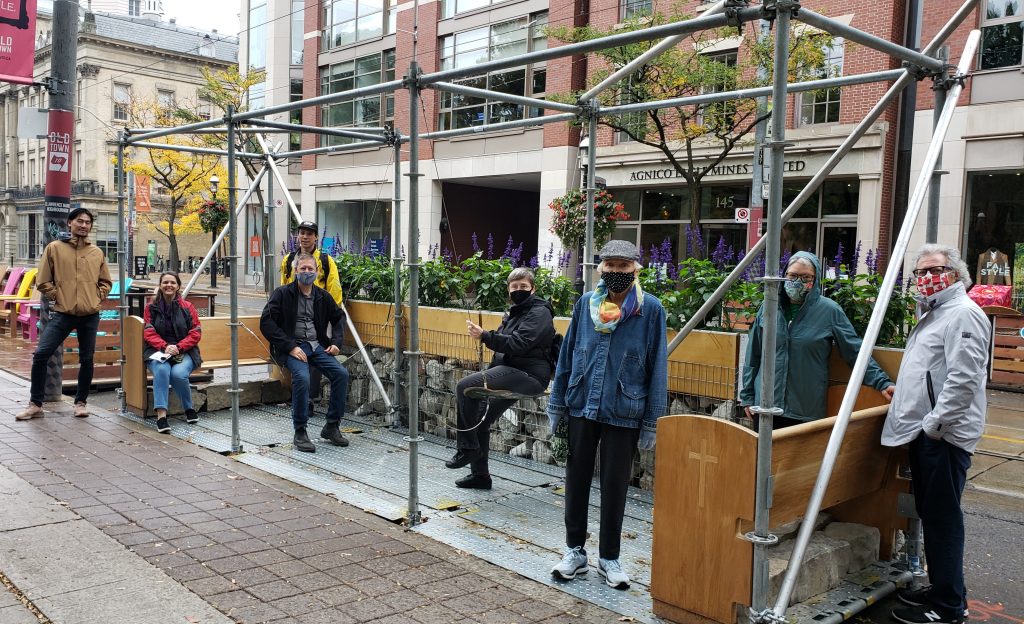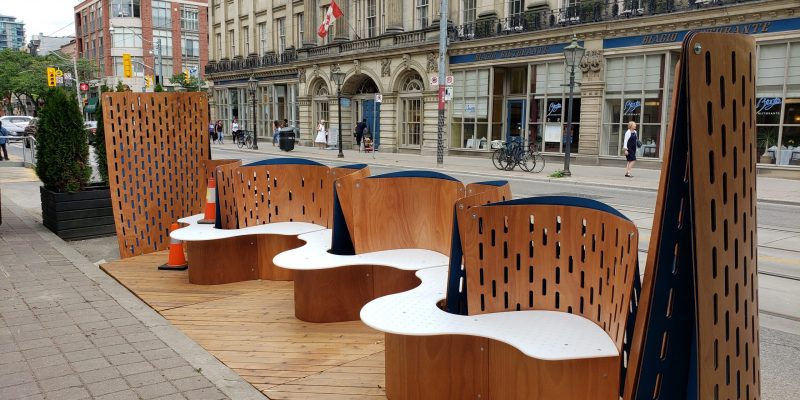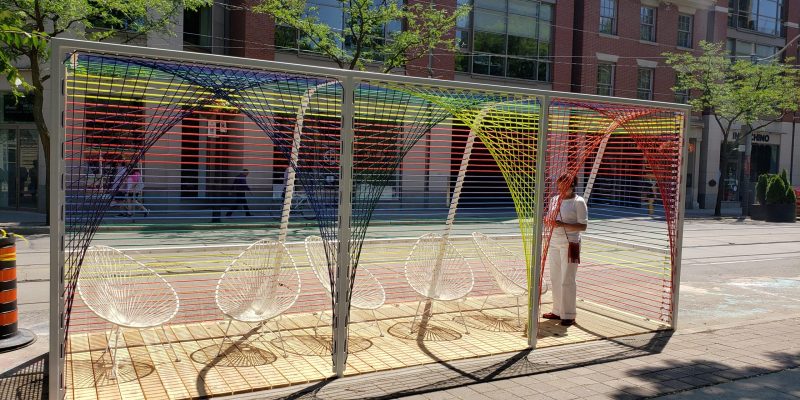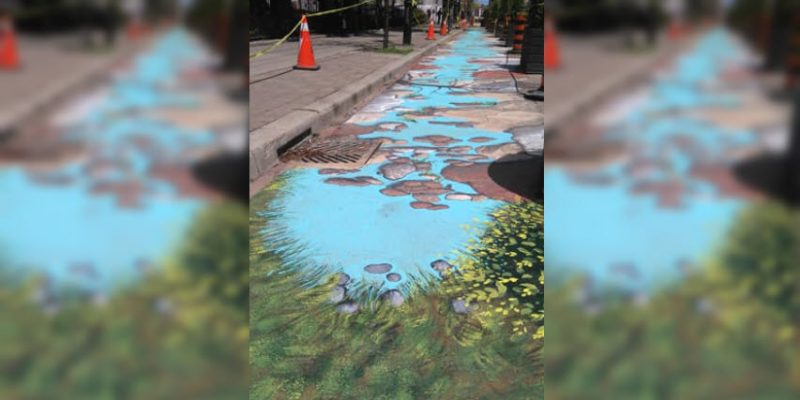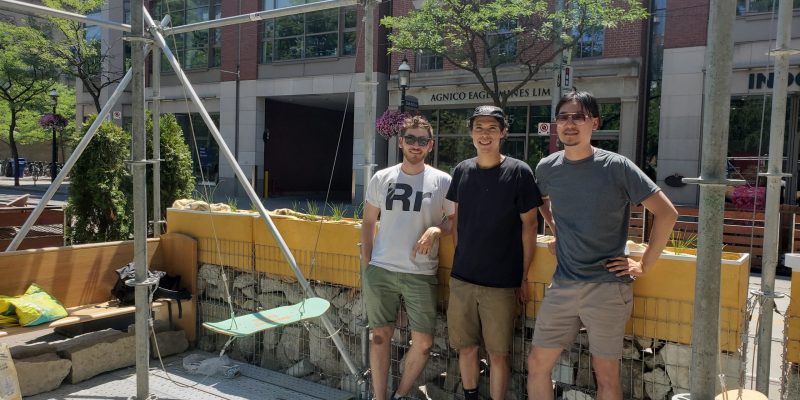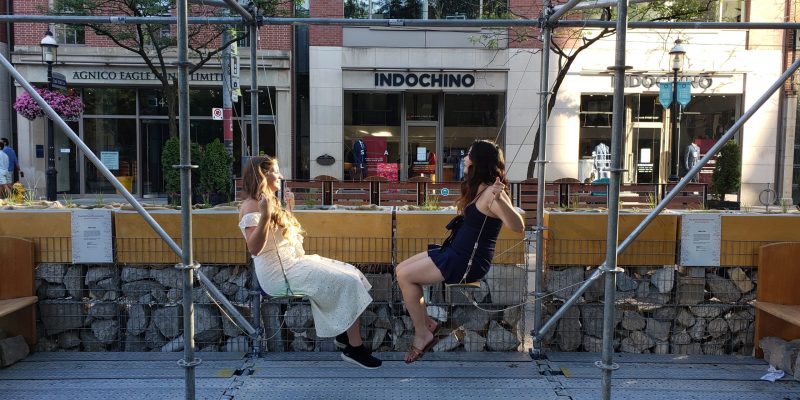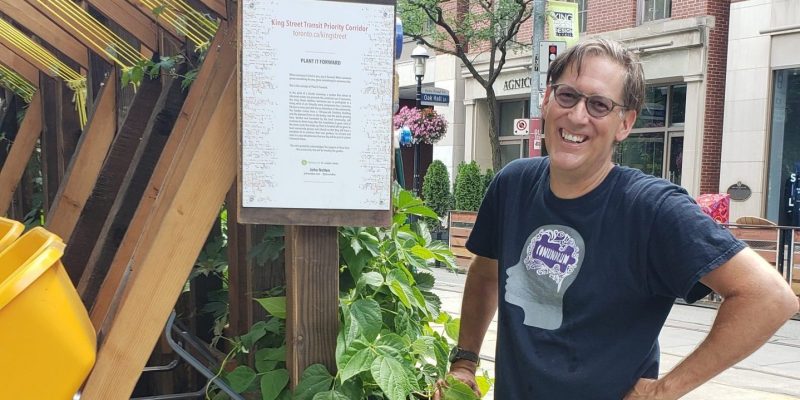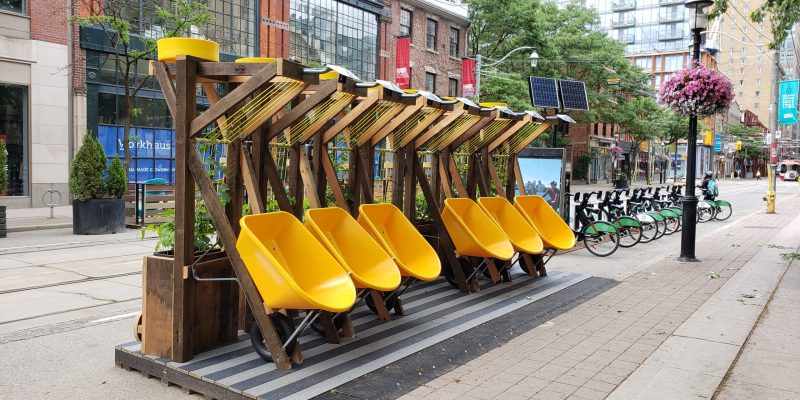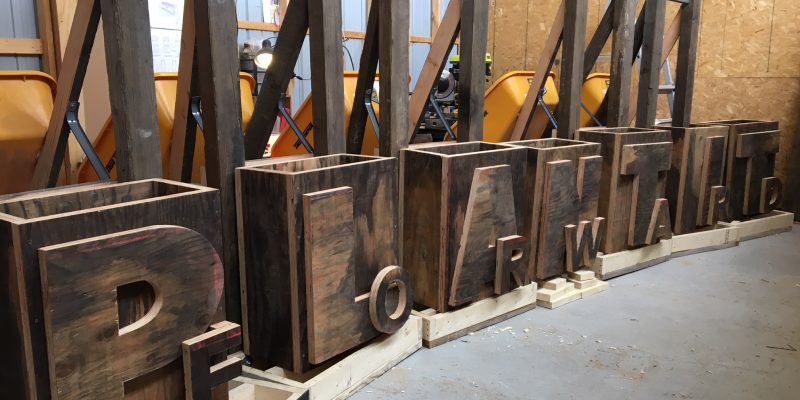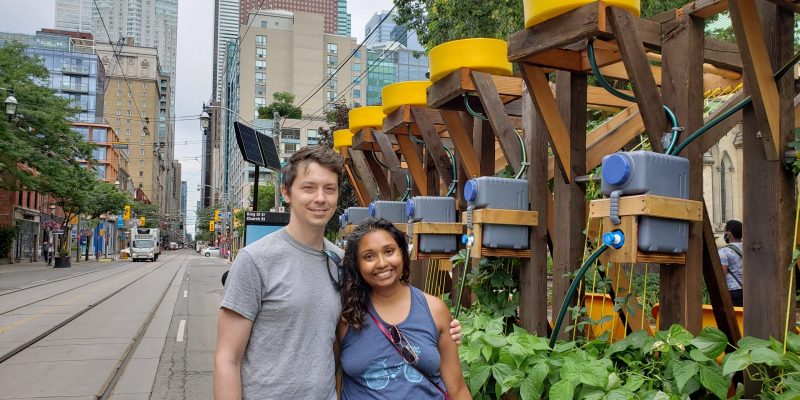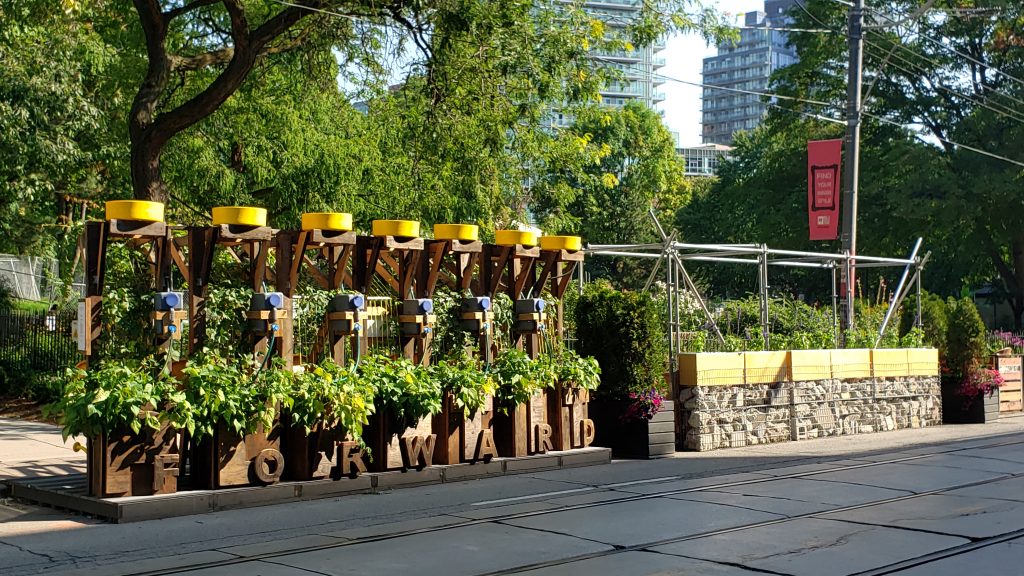
Lately, because of the COVID-19 pandemic, cities are converting streets into public spaces. Toronto has introduced CurbTO, ActiveTO and the increasingly popular CaféTO, which carve out space from traffic lanes for the public realm.
Torontonians readily embraced these placemaking efforts, not only because we desperately needed some breathing room, but perhaps because we had some experience with it already. In 2017, the City of Toronto, uncharacteristically, approved the King Street Pilot, where cars relinquished their priority status on the street, to give way to public transit, bikes and pedestrians. It was an overwhelming success. True, some businesses grumbled about lost revenue (despite statistics showing the opposite), but most Torontonians readily embraced the spacious, quiet and safe corridor. It redefined the term “freeway”.
Even before the King Street Pilot became permanent (and given the roll-off-the-tongue moniker “King Street Transit Priority Corridor”), the city augmented the curb lanes on both the north and south sides of King with public seating, planters and parklets. They invited design firms and artists to submit creative plans for structures to encourage people to gather, sit, and enjoy their surroundings. An annual design competition selects the winning designs to be installed each summer.
Some of the past installations on the north side of King Street East bordering St. James Park have been King’s Buried Treasure by Karen Roberts in collaboration with Cindy Scaife and Marg Cresswell, Cloud Bench by Denegri Bessai Studio, and High Strung by Brook McIlroy Inc., which still stands.
In the summer of 2020, two new seating installations were installed, each embodying the concept of a “circular economy”. In 2016, the City adopted a Long Term Waste Management Strategy, promoting the elimination of waste and continual re-use of resources in various city services. By making the circular economy the theme of this year’s design competition, these temporary public realm assets speak to the promise of landfill diversion.
For example, “Swing Stage” by @architectureparty—a collaboration between Sasha van Stavel, Zheng Li and Rémi Carreiro—is mostly made of temporary materials. The swing seats are repurposed skateboards and the church pews were found on Kijiji. The stones, obtained from an aggregate depot, and the rental scaffolding will be returned for future use by others and the plants will transplanted into new gardens.
This piece invites you to partake in the childhood pastime of swinging while contemplating all you see around you. In each pass, to and fro, you notice something new in the ever-changing streetscape. As the city constantly renews and rebuilds, where do the unwanted and discarded materials go? More and more is being written about the devastating environmental effects of demolition waste and how the sustainable handling of valuable demolition material is a big challenge. Some people point to the circular economy as a solution. As consumers, we all must expand our idea of recycling from household consumer goods to the building industry.
In the spirit of a circular economy, the second installation, Plant it Forward by artist John Notten, is a mini-ecosystem where virtually every component had a previous life just as every part will live on elsewhere in the community. The lumber comes from a 150-year-old Distillery building and the plywood framing from an old factory. Rain water is collected up top and stored in containers with built in hoses for watering the plants, which are tended and harvested by the local community. The plants will continue to thrive long after this installation is gone and the seven units that make up Plant it Forward will be given to local community groups and schools as a complete kit to continue their own gardens.
When someone is kind to you, pay it forward.
When someone grows something for you, grow something for someone else.
This is the concept of Plant it Forward
~ artist John Notten
Come and spend some time here on the threshold of the park; relax in a cozy wheelbarrow or take a turn on the swing and know that one day all these components will be part of another future.
The Friends of St. James Park, artist John Notten and design team @architectureparty want to give a big shout out and thank you to the volunteers who helped tend the gardens attached to both installations: Cathy W, Andrea C, Krista H, Sohnee A, Nick M, Barb L, Ardelle H, Cathy D, Chelsea S, Kevin M, Nadia A, Dwayne R, Sharmaine, Darcie M, Ellen W. and Maureen P. We would also like to thank the St. Lawrence Neighbourhood BIA and their watering crew for augmenting the rain water collection containers.
